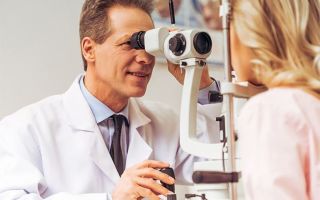Content
Nervous eye tics do not look like a significant problem, but they are unpleasant. To eliminate it, you need to understand for what reasons it appears and what malfunctions in the body it indicates.
Causes of a nervous tic
A nervous tic, or blepharospasm, is the frequent and rapid twitching of the small muscles responsible for facial expressions around the eye. Sometimes tics can develop for no apparent reason and appear from time to time over the years. Occasionally, it occurs against the background of stressful events and after them passes without a trace.
Among the main reasons for the development of blepharospasm are:
- nervous shock;
- lack of calcium and magnesium in the body;
- taking medications - psychostimulants, antidepressants and neuroleptics;
- overwork - a nervous tic can provoke the usual fatigue of the facial muscles;
- worms - this reason is more common in children.

Nervous tic symptoms
Almost the only symptom of a tic is the twitching of the eye muscles itself. There is no way to control the tic - muscle tissues contract involuntarily, twitching occurs completely unexpectedly and just as abruptly passes.
Blepharospasm does not always become noticeable to others. In some cases, eye twitching is really visible from the side. But sometimes only the person himself feels discomfort from the nervous tic of the eye, while visually his facial expressions do not change.
The manifestations of tics can vary greatly in intensity. In some people, blepharospasm goes away relatively easily and is expressed only in trembling of the facial muscles. In other eyes, with an ocular nervous tic, twitches very strongly. It is characteristic that painful sensations with spasm of facial muscles never arise.
Features of a nervous tic in children
In young children, blepharospasm appears very often, although it seems that the reasons for its occurrence are much less than in adults. However, the psyche of children is less stable and reacts sensitively to even minor events. Conflicts with parents and peers, workloads and public speaking can become serious stress for a child, against which a nervous tic will appear.
Which doctor to go to
With repeated and frequent occurrence of a nervous tic, it is recommended to make an appointment with a doctor to establish the cause of the twitching. First of all, you need to go to an appointment with a therapist, and take children to a pediatrician.
Since the causes of blepharospasm can be very different, first it is necessary to undergo an initial diagnosis and at least approximately establish what causes the nervous tic of the eye. Depending on the results of the examination, the general practitioner will be able to refer the patient to a highly specialized specialist - a neurologist, psychotherapist, oncologist or even a narcologist.
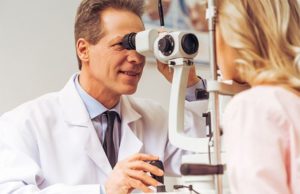
Diagnostics
Investigation of the sources of a nervous tic begins with an initial examination. At the initial stage, you will need to pass several tests and, if necessary, undergo hardware diagnostics.
Required analyzes
When studying the causes of a nervous tic, the doctor usually prescribes directions for the following tests:
- laboratory tests of urine and blood, these analyzes allow you to determine if there is an infection in the body, traces of potent drugs, signs of severe organic lesions;
- stool analysis - the direction is usually given to children, since it is in them that the tic often indicates the appearance of worms;
- blood testdisplaying the level of thyroid hormones - blepharospasm can be caused by endocrine disorders;
- ionogramThis test measures the level of calcium and magnesium, which are responsible for muscle function, in the patient's body.
As a rule, a urine test and a general blood test are prescribed without fail, and the doctor sends for the rest of the studies as needed.
Instrumental examination
If it was not possible to establish the causes of the tic with the help of tests, the doctor may prescribe an additional hardware study. The sources of blepharospasm are studied using:
- EEG - electroencephalogram, which allows you to study the activity of different parts of the brain;
- EMG - myography, which is used to diagnose the activity of various muscle groups at rest and at work;
- MRI - magnetic resonance imaging, which allows you to check the presence or absence of tumors and other pathologies of the brain;
- CT scan - computed tomography, also aimed at finding tumors or injuries to the skull and bones of the neck.
If the nervous tic of the eye is caused by serious organic lesions, then hardware diagnostics allows you to quickly and accurately establish the causes. But in practice, blepharospasm rarely indicates pathologies. More often it occurs due to stress and tension.
First aid for nervous tics
Blepharospasm has little effect on quality of life, but interferes with daily activities. If the eye twitches from a nervous tic, it becomes difficult for a person to concentrate on business and conversations. The appeared nervous tic wants to be removed as soon as possible.
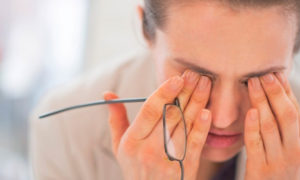
As a first aid for blepharospasm, doctors recommend:
- close your eyes and take a relaxed position, trying to relieve tension from the facial muscles and from the neck;
- open your eyes wide, blink quickly and sharply several times, and then close your eyes again for a minute and relax;
- for a few seconds, firmly press your finger on the point in the middle of the eyebrow;
- for a couple of seconds, firmly press the corners of the eyes with your fingers.
If possible, for the next half hour or hour, you should stop reading or work at the computer and give your eyes a rest. It will be useful to go for a walk down the street, your eyes will be able to relax faster, and the tick will recede.
How to remove a nervous tic from the eye
It is possible to eliminate blepharospasm with the help of simple actions, usually an attack of a nervous tic passes rather quickly. But if blepharospasm recurs often, then it becomes necessary to solve the problem in a complex way - with the help of medications and exercises.
The use of medicines
If a nervous tic is caused by abnormalities in the work of the muscular and nervous system, then according to the results of the examination, the doctor may prescribe appropriate medications. Usually, with repeated blepharospasm, several vitamins are used for nervous tics of the eye.
Calcium gluconate
The drug improves the transmission of nerve impulses and helps control the contraction and relaxation of facial muscles. The medicine is allowed, including for children's use.
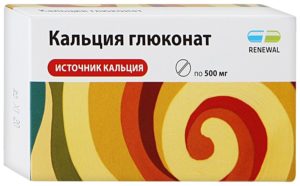
Glycine
The drug improves the functioning of the nervous and metabolic systems, relieves stress and improves brain activity. Glycine is often recommended for use in case of stress and intense mental stress.
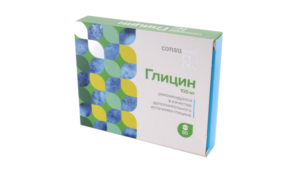
Afobazol
If a nervous tic is caused by psycho-emotional stress, then a natural and harmless sedative will help relieve unpleasant stress symptoms. With a good effect, the drug has a minimum of contraindications and is sold without a prescription.
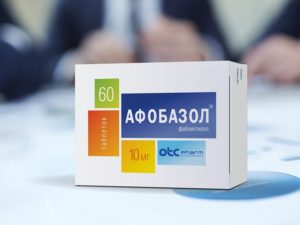
Phenazepam
This remedy is a fairly serious drug. It is used for frequent and severe nervous tics - Phenazepam soothes well, relieves muscle cramps and, in general, effectively relaxes muscle tissue.
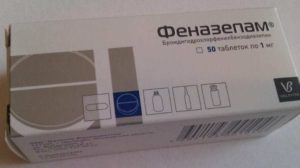
Folk remedies
In addition to medicines, you can resort to traditional medicine recipes to eliminate a nervous tic. All of them are completely harmless when the indicated dosages are observed and have a general beneficial effect on the body.
Chamomile decoction
Pharmacy chamomile has pronounced soothing and relaxing properties. A packet of chamomile tea from a pharmacy must be brewed in a glass of boiling water, let it cool slightly and add a spoonful of honey. They drink the broth twice a day - in the morning and in the evening on an empty stomach.
Hawthorn decoction
A good remedy for nervous eye tics is hawthorn, which also has a calming effect on the muscle and nervous systems. Pour boiling water over a large spoonful of fresh or dried berries and drink 100 ml three times a day on an empty stomach. In addition to relieving muscle spasm, hawthorn will also help improve nighttime sleep.
Lotions from plantain with honey
Medicinal lotions have a good effect. Beneficial substances penetrate the muscles through the skin and quickly relieve blepharospasm. Fresh leaves plantain it is recommended to grind in a volume of 2 large spoons, brew 100 ml of boiling water, then add a spoonful of honey to a warm broth and stir well. In the finished product, a cotton swab is moistened and applied to closed eyes for half an hour. You need to repeat the procedure daily for 7 days.
Eye Charger
Simple exercises help to strengthen small facial muscles. During the exercise, the muscles tense and relax, which improves their tone and prevents the occurrence of a nervous tic of the eye.
The exercise consists of just a few simple exercises. It is necessary:
- close your eyes tightly, and then sharply open your eyes and relax the muscles of your face 7-10 times in a row;
- lie down horizontally, relax your face and neck muscles, and then open your mouth and pronounce the vowel sound "y", trying not to strain the upper part of your face, 5 times in a row;
- sit up straight, blink quickly for several seconds, then close your eyes tightly, and then open your eyes wide, repeat the procedure 5 times, and then close your eyes for 5 minutes and relax.
A simple massage for the eyes also gives a good effect - the eyelids are lubricated with a small amount of moisturizer, massaged with light movements for a minute, and then another 40 seconds quickly and often blink.
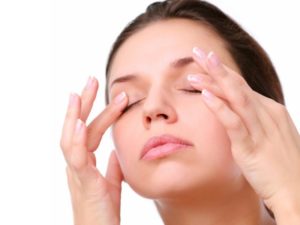
Prevention of a nervous tic
To prevent a nervous tic from reappearing after treatment, it is important to reconsider your lifestyle and pay increased attention to your daily routine and diet. In conditions of constant physical and emotional overstrain, blepharospasm will return, therefore, it is necessary to deal with it, including prophylactically.
Proper nutrition
The health of the nervous and muscular systems largely depends on human nutrition.To prevent malfunctioning in the body, it is recommended to eat at least 5 times a day at the same time in small portions.
The diet should contain enough protein, carbohydrates and fats - the lack of one of the components will negatively affect health. The ideal ratio of BJU looks like 30%, 20% and 50%, respectively - with such a diet, the body will receive all the necessary substances. A sufficient amount of vegetables and fruits should be present on the daily table, it is better to reduce sugar in the diet.
Relaxation
The ability to relax plays an important role in the prevention of nervous tics. It is recommended that you take time out every day for a relaxing break, such as walking outdoors or doing yoga, swimming or massage. Chatting with pets or being creative is helpful, and it is also calming and relaxing.

Essential oils
Aromatherapy has a good effect on the nervous system. If you are prone to a nervous tic, it is recommended to use an aroma lamp more often and fill the room with the smells of orange, lavender, juniper or mint. The pleasant scent helps to avoid unnecessary stress, helps to normalize sleep and maintains a good mood.
Healthy sleep
The most important condition for the normal functioning of the nervous system is healthy sleep. Night rest should take at least 7-8 hours, while it is advisable to go to bed at the same time. It is best not to use a computer or smartphone before going to bed. They interfere with relaxation and tune in to rest, since they stimulate the brain to work actively.
Possible complications of tics
In general, a nervous tic is not a dangerous disease. However, in the absence of treatment, it can lead to unpleasant consequences, namely:
- to chronic irritation and redness of the eyes, purulent inflammation;
- to ptosis of the upper eyelid and spasms of other facial muscles;
- to the occurrence of migraines and double vision;
- to nervous disorders - with a constant nervous tic, a person feels tension and discomfort, this affects the general physical and psychological state.
It is important to remember that blepharospasm can indicate a serious disorder such as Tourette's syndrome or Parkinson's disease.
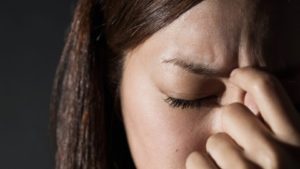
Conclusion
Nervous eye tics seem to be a harmless problem, but may indicate a serious medical condition. In any case, you want to get rid of blepharospasm faster, and both medications and home treatments help to do this.

